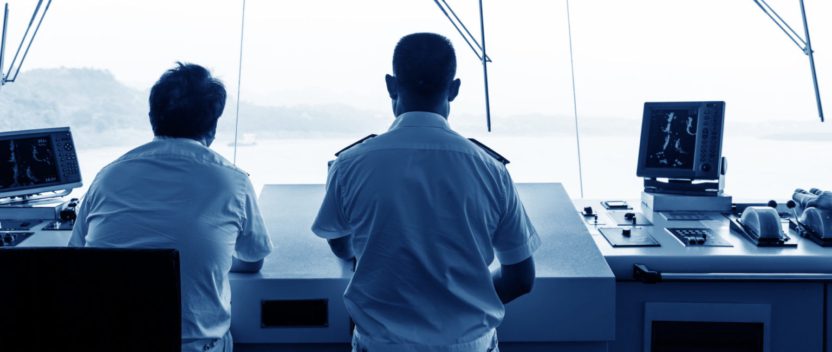Change we can believe in?
It’s not much of a statement to suggest that technology is changing the maritime industry. Some days during the recent Nor-Shipping event we heard little else. But the connectivity that enables this ‘new maritime technology era’ is a little like the lightbulb in the psychiatrist joke: it has to really want to change.
Finally, this seems to be happening. In his remarks to the opening panel at the DigitalShip CIO Forum in Oslo, Wei Li of consultancy NSR pointed out that maritime was already moving from a capacity constrained market to one of rich applications driven by user demand.
As has been discussed on Great Circle before, a lot of new capacity is about to break over maritime like a wave, but what the effect will be is not completely clear.
Earlier in the week, Intelsat shared some initial findings of research by Futurenautics which suggested shipowners are more likely than ever to consider VSAT as their next upgrade. It also found that though the IT department still rules the roost in purchase decisions, fleet managers and senior staff are increasingly likely to have a say in future communications needs.
When asked what solution ship operators would upgrade to next, more than 70% indicated it would be VSAT or High Throughput Satellite (HTS), regardless of the sector they operated in. Cost reductions and increased efficiency were the leading reasons for the decision.
The research also found that the minimum bandwidth desired by the crew to deliver acceptable internet access was 1MB per second – far higher than what is available on legacy L-Band systems – and that 70% thought operators should provide it to crew for free.
So with supply bubbling and demand simmering, the issue seems to be how to sell the service: no brainer simplicity or by laying out the opportunity and letting the industry pick and choose?
To newly-installed Head of Maritime for Inmarsat Ronald Spithout, the choice is no choice at all. As the incumbent with majority market share he said Inmarsat would add capacity on its next generation HTS service just like it sold its predecessor L-Band FleetBroadband.
His company’s advantage is that GlobalXpress is a network designed for mobility unlike the Fixed Satellite Service (FSS) capacity coming into shipping in the hunt for customers.
The ‘massive change’ he sees coming is a supplement to Inmarsat’s historical partner base with new customers who are themselves service or application providers, be that engine-maker or shipmanager. “The market is moving towards where you buy the service and if you pay for the traffic you get a say in the connectivity,” he said.
Martin Kits van Heyningen whose KVH Group was being linked to a takeover by Inmarsat played evangelist: “there is never going to be enough bandwidth,” he claimed. “What has to happen is the integration of a matrix that includes speed, volume, price and coverage. It’s all a trade-off.”
KVH and Airbus Defence and Space have been jousting as to who is ‘Number 1’ in maritime VSAT but the latter’s CEO Tore Morten Olsen saw his service provider role as exactly that. “It’s business as usual for us. We have signed with Inmarsat and Intelsat [for GX and EPIC]. It’s about getting value on board the vessel and doing what you couldn’t do in the past. Shipowners don’t care about whether its Ka or Ku band, they just want it to work.”
“I agree what we will see is much more choice in piping data to clients from shore, with provision via different pipes to third parties. There is a risk in that, but more clients will be sharing connectivity. The benefit is the opportunity to develop benchmarks for everything from the coating to the engine or logistics performance.”
Bob Legg, Business Development Manager for iOra provided the software vendor perspective, one in which increasing sophistication in shoreside replication is rolling offshore, with faster more resilient data links slowly bringing the cloud to shipping. But he warned “data is the needle in the haystack without the right tools.”
The business aim he said was increased optimisation at lower cost, bringing together information into one place where it could be inspected and analysed. “It’s what is in the way and what can you remove that matters’.
James Collet had read the script too having just announced an extension to Intelsat’s planned HTS service. He predicted a doubling of satellite capacity available to shipping by 2020 with solutions that would be easier to connect to. Where the economics kick in is being able to build a network at the required level of price performance with lower cost hardware and software.
Iridium is the only one of the major maritime providers staying in L-Band for its next generation constellation but Director of Maritime Business Kyle Hurst also sees a redefining of value in maritime communications where ‘choice’ is no longer solely about speed of service but instead reflects quality of service.
“Bandwidth will continue to become cheaper and more solutions will appear, with many more opportunities around applications. The question is, how do you bring more value?” To some extent he expects the ‘polarisation’ between band and product will disappear as service partners use the bandwidth to innovate.
Whether this evolving picture will lead to more consolidation – or a clear out of the hundreds of suppliers that claim to be able to supply maritime VSAT – is not certain. In some ways the scale of the opportunity might encourage more to enter the market.
Despite the sale rumours, Kitts van Heyningen doubted that consolidation added much by way of end-user value, while Airbus’ Tore Morten Olsen said too many players were unable to work globally – the key differentiator.
And what of the disruptors we heard about earlier this year? Olsen repeated his call for them to come in and bring their investment dollars with them – his company is also in the process of being sold, probably to a private equity firm.
It fell to the software vendors later the same day to join the dots between productivity and bandwidth. Innovation happens when IT and business cross over and work together, said Cisco’s Rene Pluis. “The new generation of IT professionals see themselves driving the business strategy.”
Good news if you are selling bandwidth – sorry – solutions.


